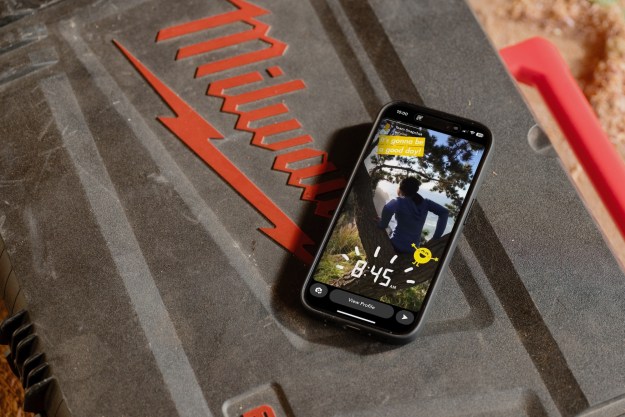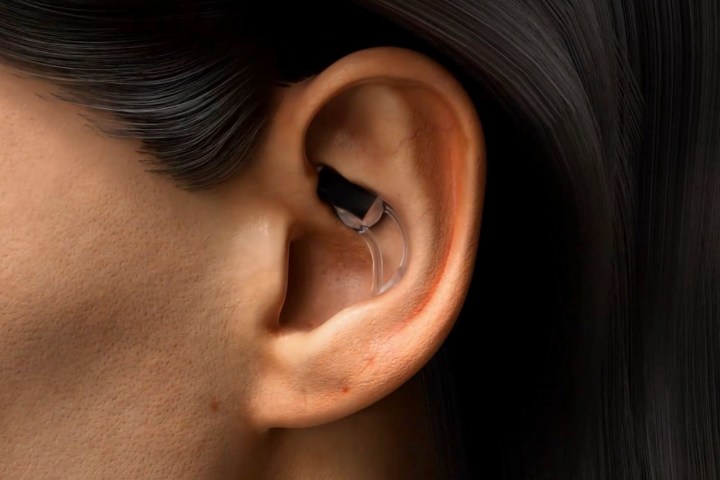
We’re used to seeing people with devices in their ears, whether it’s Apple AirPods, other true wireless earbuds, or hearing aids. But the tiny Stat in-ear wearable is something very different from all these, and despite its small size, it has the potential to meaningfully change the lives of millions of people.
Digital Trends spoke to Daniel Lee — co-founder and CEO of Stat Health — about this transformative product and who it will help, the innovative way the company has chosen to power it, and how it could pave the way to something even greater in the future.
What is the Stat wearable?

I talked to Lee over a video call. We initially touched on his previous experience with tiny, in-ear wearables, as he was a co-creator of the product that would eventually become the Bose Sleepbuds. A naturally fast talker, Lee’s enthusiasm for the unusual Stat wearable was absolute and infectious.
What exactly is the Stat wearable? It’s a tiny wearable that fits in the upper ear — so it can be worn with other in-ear or over-ear wearables — and uses an infrared optical sensor to measure blood flow, which helps the wearer understand bouts of dizziness, fainting, headaches, and fatigue that occur right after standing up. The cause can be traced to the body not automatically contracting blood vessels in the legs, resulting in insufficient amounts of blood being sent back to the heart, whose job it is to pump it around the body to counter gravity’s effect.
We’ve probably all experienced the brief light-headedness after getting up too quickly caused by this, but while we recover quickly as our body does its work, others do not, and the symptoms the Stat is tracking are much more serious and long-lasting.
The old, the young, and Long Covid sufferers
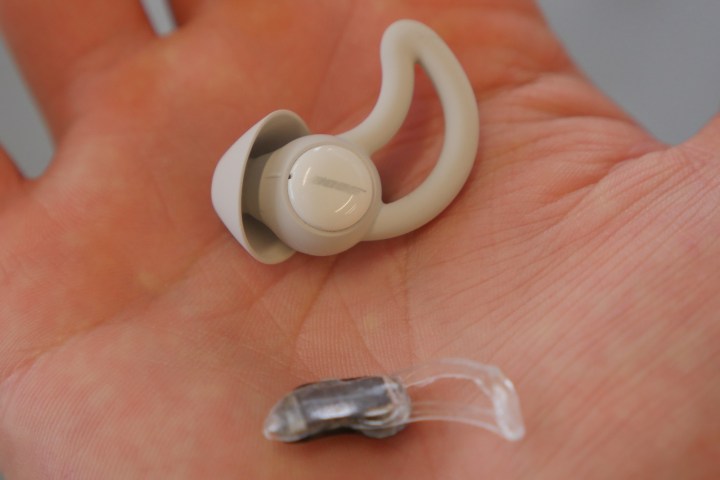
“Our dizziness doesn’t affect us at all. We stand up and stabilize for 5 seconds, and that’s it,” Lee said, confirming what most of us feel every now and then. “These people are very different,” he continued. “Their autonomic system isn’t working, so when they stand up, it’s not regulating correctly, and they just can’t stay up. It gets worse and worse because their body isn’t adapting over time, and some people become bedridden. It varies so much from day to day due to so many factors, like how well they slept and how hot it is.”
The severe, debilitating dizziness and fainting described by Lee are symptoms of illnesses including Long COVID, Postural Orthostatic Tachycardia Syndrome (POTS), Myalgic Encephalomyelitis (ME), and other syndromes that are affected simply by the act of standing up. Stat Health’s data indicates these symptoms prevent more than 80% of sufferers from leaving the house for at least two days a week, and almost 20% cannot even get out of bed for at least one day a week, for fear of fainting when out and about.
“But the longer they lay down, the worse it is because your body needs to practice. It has to practice combating gravity,” Lee said.
You may think the symptoms mostly affect older people, but it’s far more widespread than that, according to Lee.
“You wouldn’t expect a 20- to 40-year-old female to have these issues, but Long COVID disproportionately affects that group,” Lee said. “We actually think of the elderly population separately because their main issue is they do pass out. They cope with the feeling, then faint and hurt themselves, whereas the younger population, they don’t actually pass out that frequently. They don’t fall and hurt themselves because they recognize the feeling isn’t normal and lay back down, and then they’re just bedridden.”
How does the Stat wearable help?

How does an in-ear wearable help with all this? To understand, you shouldn’t think of the Stat exactly like fitness tracking on an Apple Watch, in that it’s not pushing a normal body to improve; instead, it’s working on rehabilitation and retraining the body to return to normalcy. The sensors track blood flow, heart rate, and blood pressure trends. They are so sensitive that the device has been shown to predict fainting minutes before it actually happens. For wearers, there will be two key metrics displayed in the app collated from the data, which will assist in the rehabilitation process.
“There are two main scores that most people with these conditions will use on a daily basis,” Lee said. “The Up Score is calculated by how long someone is sitting upright, how long they are standing, and how long they have walked around. It encourages someone to give their body more time to practice combating gravity and staying upright,” Lee explained.
“The Flow Score consolidates heart rate changes, blood pressure trend changes, and blood flow to the head, so someone knows if it’s a good day to push, kind of like a pacing mechanism. It’s also a log of how much someone is progressing. We encourage people to try to do a little bit more each day as part of the rehab, but at the same time, we don’t push them on days where their bodies are freaking out. And that’s how we are going help them in their journey back on their feet, literally.”
The Stat in-ear wearable is designed to help you retrain your body to cope with the way gravity affects blood flow to the head, but to do this, it really needs to be worn all the time. Removing and recharging the device would interrupt this, so Stat Health came up with an ingenious and very cool way of powering the wearable using light.
Powered by the sun
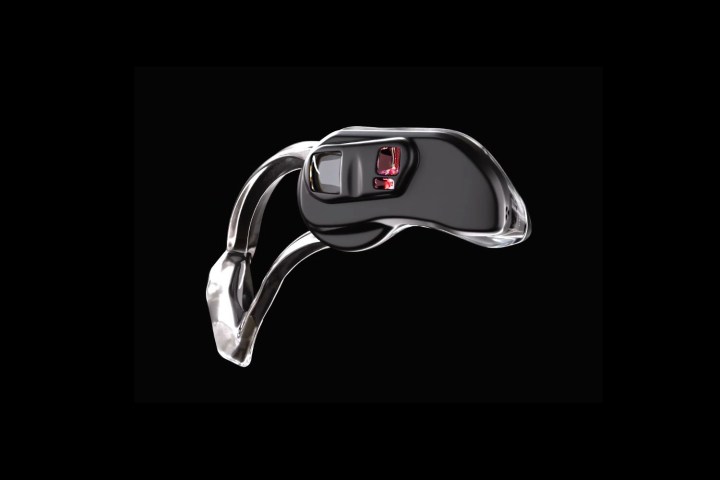
For it to do its job as a rehabilitation device for people whose symptoms first appear when they try to stand up, it needs to be constantly charged. So having the Stat in-ear wearable on charge overnight isn’t very helpful. To solve this, it uses a solar panel to power up the battery, which means in some circumstances, it’ll never need to be removed and recharged at all.
“We’re using solar panel tech that is extraordinarily expensive and usually only makes sense for space applications, but because it’s so tiny, it starts to become financially viable for us,” Lee revealed. While it can collect energy from weak indoor light, sunlight is required to charge the battery most effectively. “If you’re out in the sun for around three hours every two or three days, you never have to charge it because it’ll keep itself charged and topped off,” Lee said.
There are several variables that may affect this. Obviously, if you’re bedridden, you won’t be going outside, and long hair will affect how much sun the wearable sees too. In these cases, Stat Health is working on optimizing the battery to last two or three days without solar charging, with three to four days being theoretically possible. For those days when it does need charging, it still won’t need to be physically plugged in.
“It doesn’t actually have pogo pins, inductive charging, or the need to … go in a very specific location on a pad. We have a cradle, and you just toss it in and let it settle in whatever orientation, and an infrared light turns on and bathes it in light. Then we are also going to provide a small keychain carry case to charge it on the go.”
When will it arrive, and how much will it cost?

On the subject of the product’s launch, Lee said: “We’ll do our first batch, almost like a beta initial launch, in the first quarter of 2024. We’ll track it for six months or so, and we’ll step up manufacturing to a larger scale.”
Preorders are expected to start toward the end of 2023. It’s going to be a subscription-based device, but it’ll be more like the Whoop fitness band than the Oura Ring, as there will be no charge for the product itself. Stat Health is approaching the subscription package in an interesting way, as Lee explained.
“We want to decrease the pricing scale so it matches the value provided and is more sustainable in a long-term fashion. Patients live with these symptoms for decades, and [a fixed subscription] is not a sustainable thing. We’re trying to design that out by being innovative with our pricing model,” Lee said. “We want to start at one amount and eventually decrease it for longtime subscribers”
The subscription pricing system makes sense for the type of business, according to Lee. The fee helps cover everything from data storage to ongoing support for a product that will likely be used for many years. On the Stat Health website, it’s indicated the current initial cost of the subscription will be $50 per month, but this has not been finalized at the time of writing.
What does the future hold?
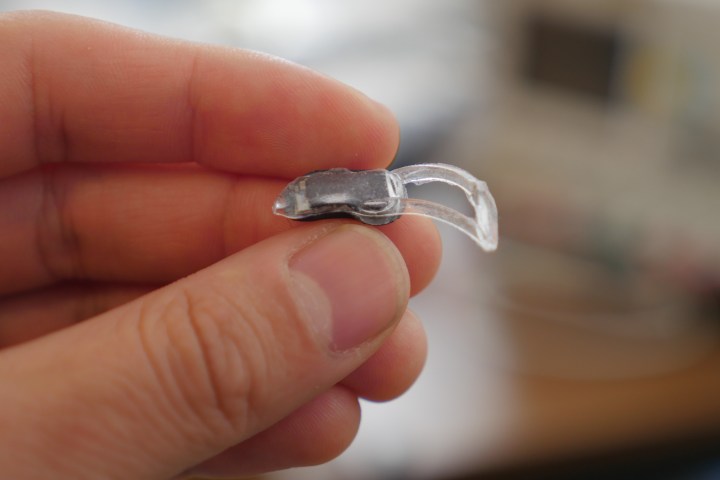
The Stat in-ear wearable has the potential to change the lives of people who are, in effect, prisoners in their own homes. It’s doing so in a highly convenient and technically exciting way by incorporating solar panels and charging into a wearable that’s so tiny it can be worn in your ear and not interfere with anything else — and for all day and night too.
As my time speaking to Lee came to an end, he summarized Stat Health’s mission:
“Our goal is to empower people to take some of their healthy years back. We will start with a very tailored data experience for a very specific population because each person has very different needs, all made possible through our wearable 24/7 cardiac monitor.”
Before we finished, Lee also commented on what’s next for Stat Health and how the technology may end up helping even more people. The Stat wearable is a wellness device, but the company is working on something else that will need to be approved by the U.S. Food and Drug Administration (FDA). As it stands, the Stat looks at blood pressure trends, not actual blood pressure, but the combination of its in-ear location and the infrared sensor gives it the potential to do more. Lee didn’t have much to share at this stage, but what he did say was very exciting.
“We’re actually making a separate product that’s going to be an FDA-regulated product because it’s going to have to give an absolute mmHg [blood pressure] reading, and that has very high criteria and is a high bar to clear. We’re still in the data-collection period for that, and it’s on the horizon, not what we’re currently focused on, but the core technology we’re building can be leveraged into that.”
Editors' Recommendations
- I wore a smartwatch that’s unlike any you’ve seen before
- This touchscreen AirPods case is the worst thing I’ve seen all week





